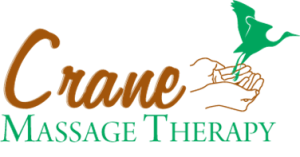We begin our exploration of the different modalities, or types, of massage with the most famous form: Swedish. Most other forms of massage are derived from Swedish massage techniques.
Believed to be the most commonly requested modality, Swedish (also known as relaxation) massage is relatively gentle, and focuses on all the body’s major muscle groups. It is thought to improve flexibility and relax the muscles, as well as flush out toxins and other wastes from the body’s tissues, like lactic and uric acids.
Classic Swedish massage utilizes five specific styles of movement: long strokes, kneading, deep circular movement, tapping and vibration.
1. Long, gliding strokes, known as effleurage, move towards the heart to encourage blood and lymphatic flow. The strokes are performed on the torso, limbs and other areas. The massage therapist will use areas like their entire hand or the pads of the thumbs, depending on what is most appropriate for the situation.
2. Kneading, or petrissage, is meant to gently roll, squeeze and lift muscles up from the bone in order to stimulate deep circulation and clear out toxins.
3. Deep circular movement, or friction, uses the thumb pads or fingertips to make deep movements to break down knots in the muscle fibers, particularly in areas like joints and the sides of the spine.
4. Tapping, or tapotement, is frequently depicted as a karate-chop maneuver, but there are several variations including using a fist, the side of the hand, or just the fingertips, as well as tapping from the air or moving with constant contact with the skin. It is ideal from cramped or especially tense muscles, particularly in the lower back region.
5. Vibration was added later, and is intended to release tension temporarily in the area being worked on.
If you look for a Swedish massage in Sweden, you won’t find it used by that name; like General Tso’s chicken, Swedish massage was not created in Sweden—or by a Swede. Throughout Europe, what Americans think of as Swedish massage is referred to as “classic massage.”
The French-named movements were systemized and popularized by a Dutch massage practitioner near the turn of the 20th century, and were collected from methods used around the world, including those thought to have been developed by a Swede named Henri Peter Ling.
Ready for a Swedish massage? Book an appointment today!
